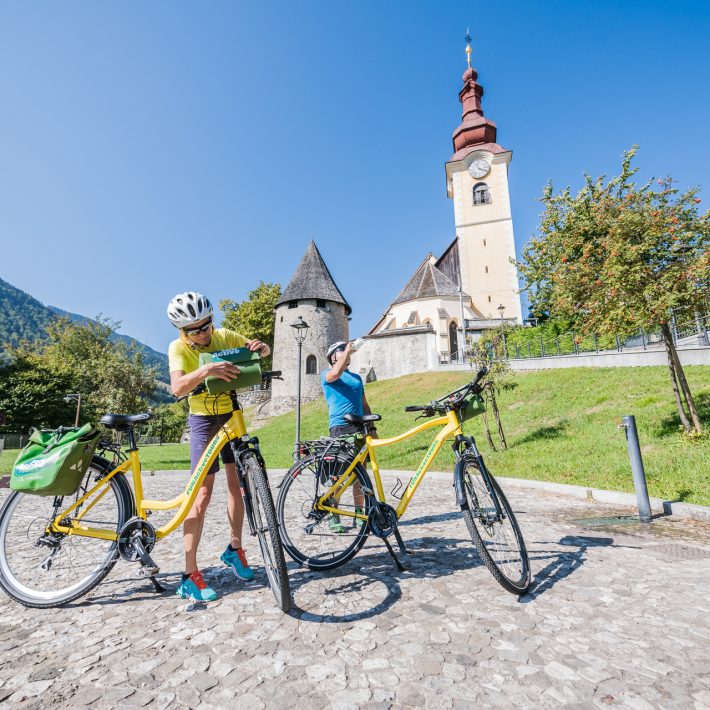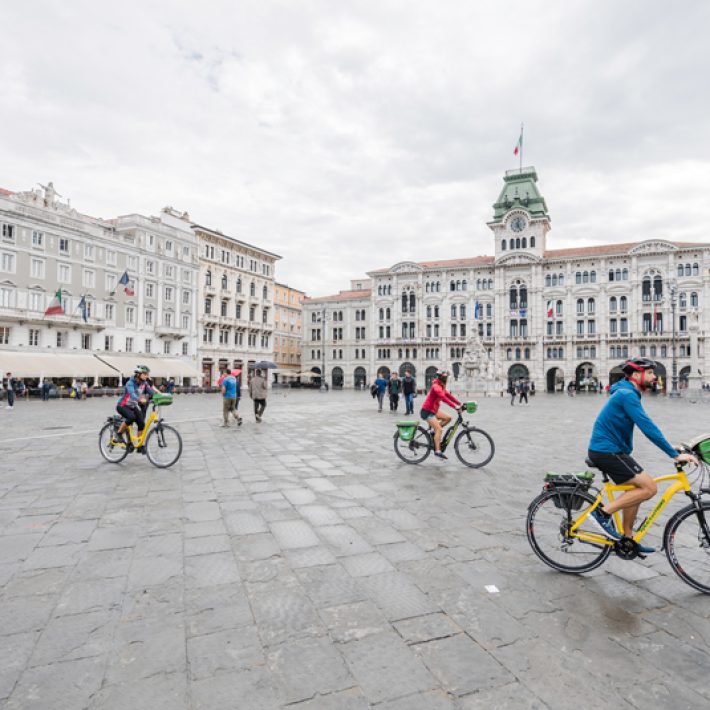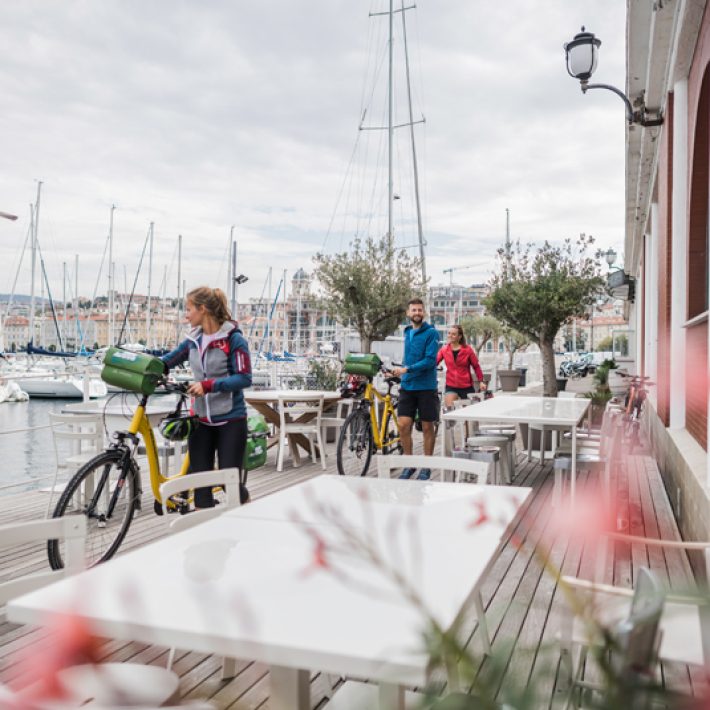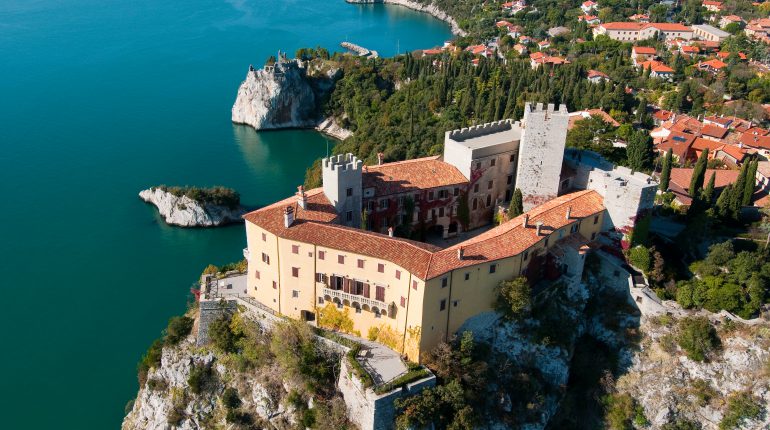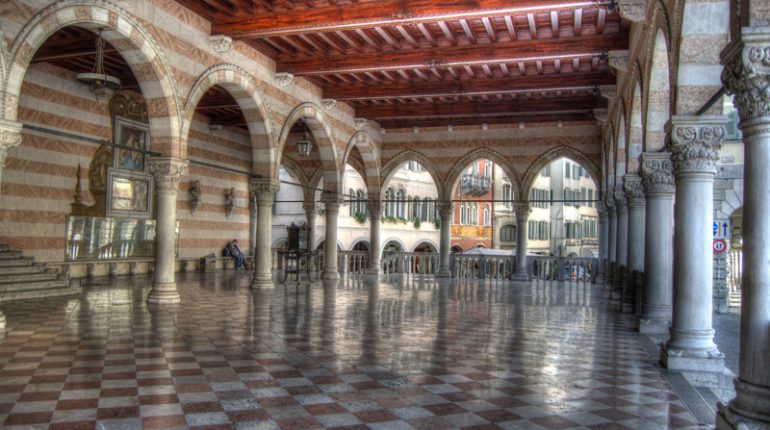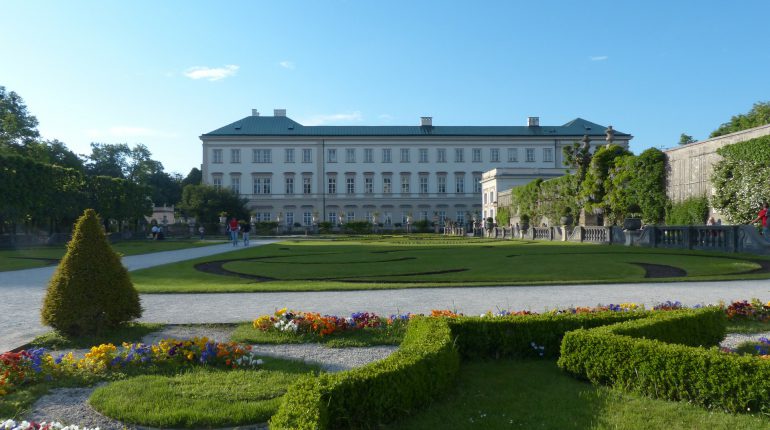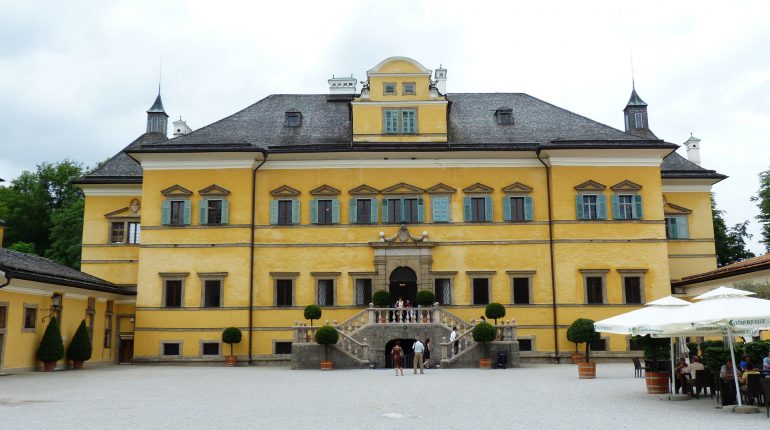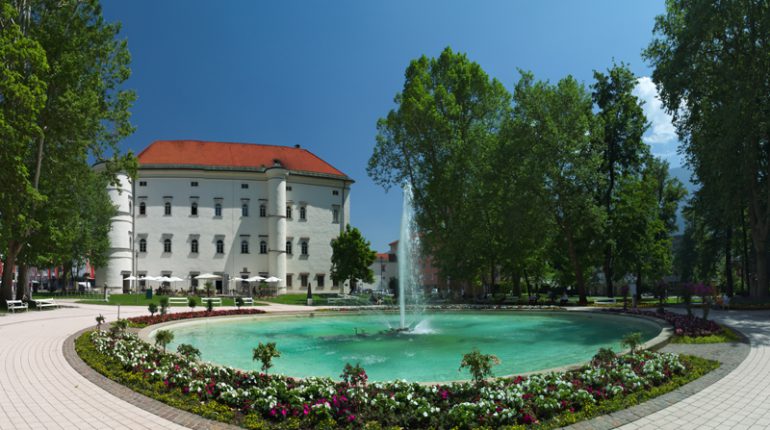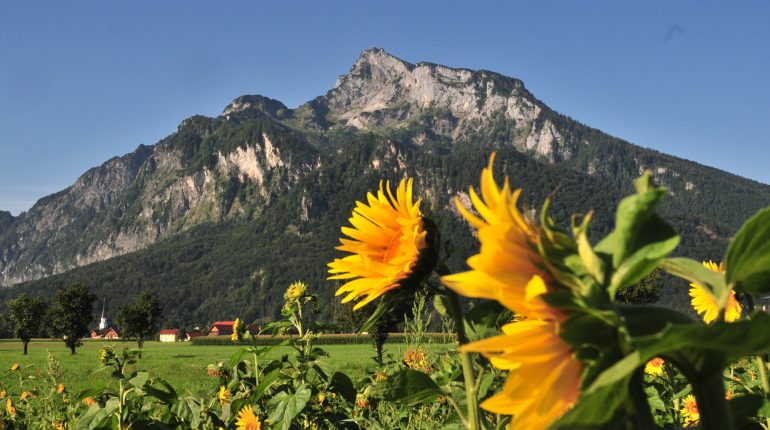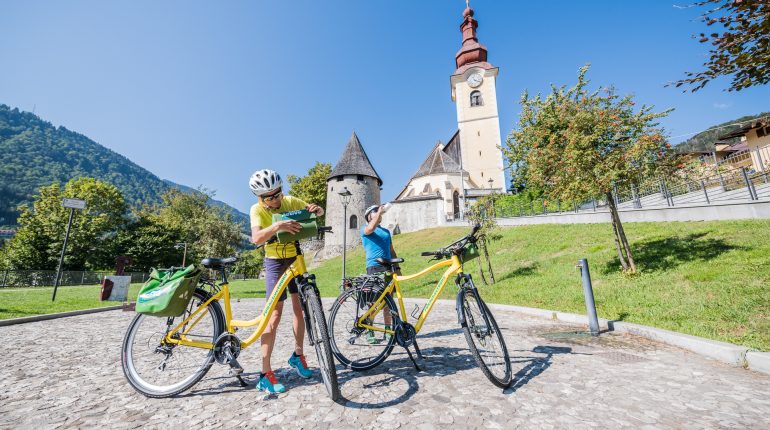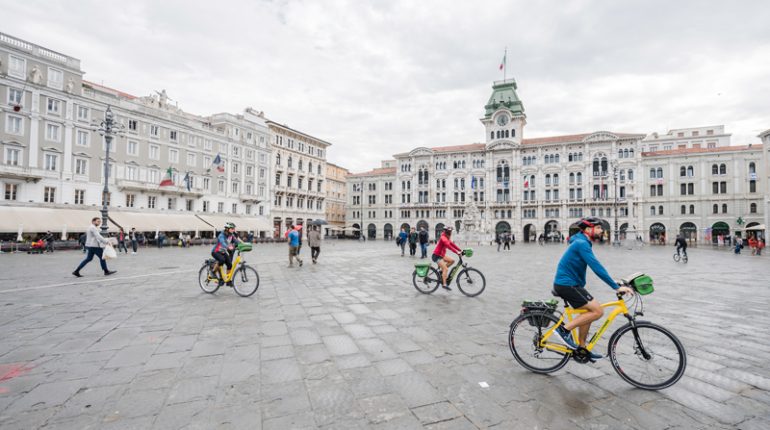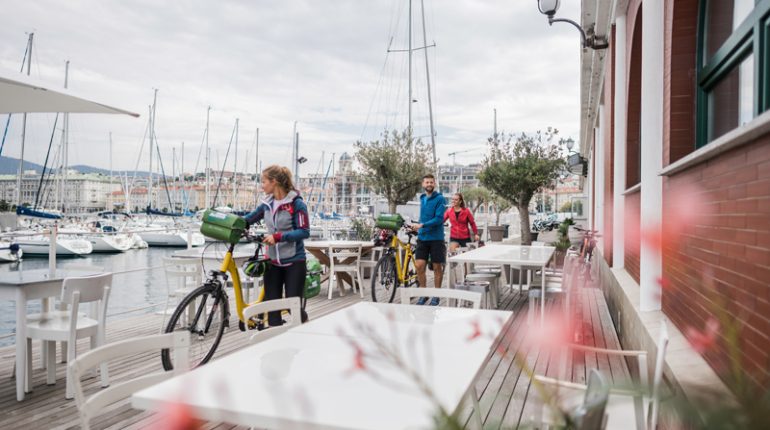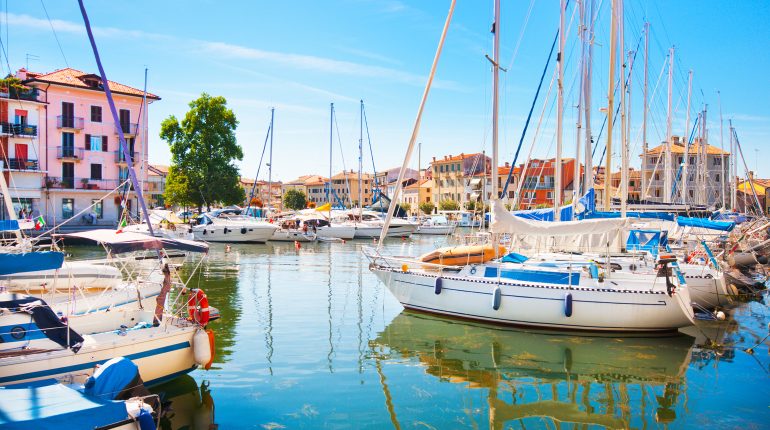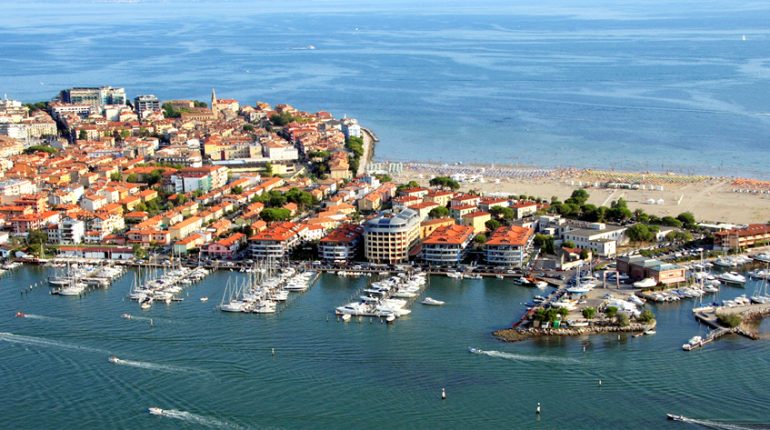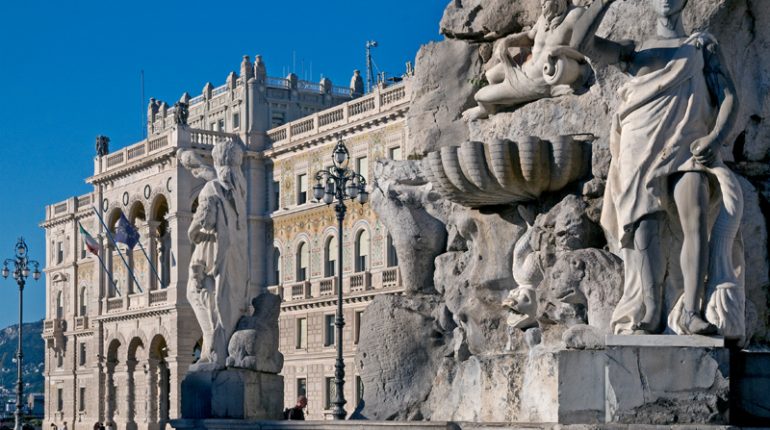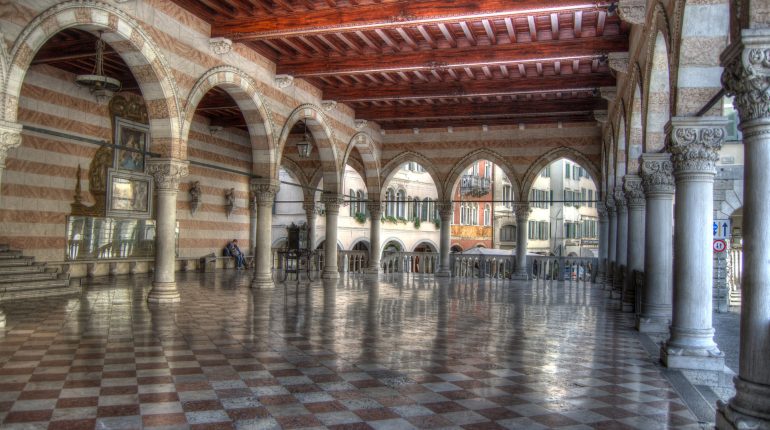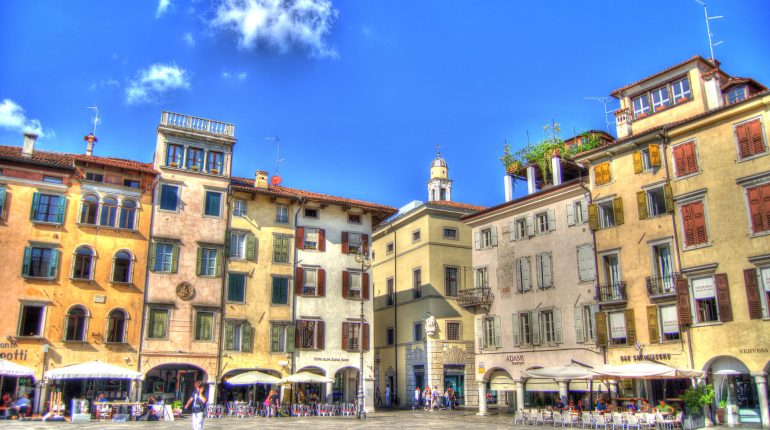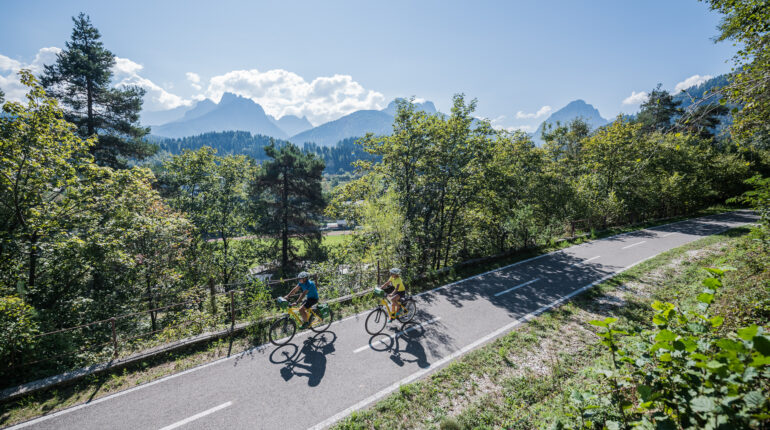
In a week across the Alps to the Adriatic Sea – that sounds like hard work! It is not quite as exhausting, if you choose the Alpe Adria cycle route. On the well marked paths the crossing of the Alps is also feasible for pleasure cyclists, because the ascent to the main ridge of the Alps is divided into two daily stages, the last one is will be done by using the train. On your journey you will pass the idyllic Salzach valley, Bad Gastein, the impressive high mountain landscape of the Hohe Tauern, the sunny Trautal and the wildly rugged canal valley.
Cycling on the Via Julia Augusta you pass Palmanova and Aquileia and get to the fishing village of Grado and to the city of Habsburg Trieste. The tour runs along bike paths or very quiet side roads, through small villages and picturesque landscape. The section ober the Pass Lueg can also be bypassed by train.
Included and Not Included Services
Accommodation in guesthouses and hotels 3*** and 4**** category
Breakfast
Videobriefing
Luggage transfer from hotel to hotel
Train ride Böckstein – Mallnitz bicycle included
Well planned routes
Detailed documents (maps, route description, places to visit, important telephone numbers)
Telephone service hotline for the entire tour
Navigation app
Arrival to the starting point of the tour
Departure at the end of the tour
Drinks, tourist tax and all extras
Lunch, Dinner
Not mentioned entries
Rental bikes and travel insurance
All not expressly mentioned under the item „Included services“
Day 1: Arrival in Salzburg
Individual arrival at the starting hotel in Salzburg. A bicycle trip could not start more impressively than in Salzburg, the city of Mozart. You are surrounded by so many Baroque monuments in this beautiful old town. Take some delicious Mozartkugeln (typical Austrian confectionary) on your journey to the sea.
Day 2: Salzburg – Bischofshofen/St. Johann
(approx. 60 km)
With a view of the fortress Hohensalzburg you leave the city. In the distance the mountains are already visible. The first section takes you along the Salzach. On the way you will pass the former summer residence of the Salzburger Bishops, Hellbrunn palace. For more than 400 years, the extraordinary water games have been a delight for young and old. On the Tauern cycle path, the journey continues in the direction of Hallein, known for its crooked townhouses and above all for the white gold - salt. Another highlight on the way is the waterfall in Golling.
Day 3: Bischofshofen/St. Johann – Bad Gastein
(approx. 55 km)
The journey continues through the tranquil Gastein valley. Until the 20th century, it was only accessible along mountain paths and narrow roads. Framed by the peaks of the Hohe Tauern, you cycle along the Gasteiner Ache (river). Passing Dorfgastein and Bad Hofgastein you reach the famous health resort Bad Gastein. The „Montecarlo of the Alps“, as the place is often called, is known for its many splendid hotels from the „Belle Époque“. The main attraction here is the Gastein waterfall, which has been the focal point of many artists and poets.
Day 4: Bad Gastein – Villach
(approx. 79 km + train - mostly downhill)
From Bad Gastein you continue to Böckstein and get on the train along the Tauernschleuse (railway line) to Mallnitz; then you cycle along the river Möll through the impressive mountain landscapes. This section of the cycle path is also known as the Glocknerradweg. It goes mostly slightly downhill and leads through the Hohe Tauern National Park. From there the Drau cycle path leads to Spittal, famous for its Renaissance castle of Porcia. The stage ends in the second largest city in Carinthia. Villach is not only famous for its Carnival, but also known for its Villacher Kirchtag (folklore festival). In addition, numerous places of interest await you. If you still have enough time, we recommend you to take a swim in one of the lakes around the city.
Day 5: Villach – Venzone/surroundings
(approx. 40-60 km + train, ticket not included; or approx. 85-90 km )
Following the river Gail you leave Villach behind and shortly after you say goodbye to Austria and enter Italy. In the three-nation corner Italy-Austria-Slovenia extends the Kanaltal valley, whose main centre is the town of Tarvisio, on the Italian border. Here Austrians, Slovenes, Friulians and Italians have been living together for hundreds of years, because all the three big European language families – Teutons, Romans and Slavs – join there. The town of Tarvisio is not only one of the most important mountain resorts of Friuli Venezia Giulia, but it is also famous for its winter offer in this region. Continuing through the valley of Kanaltal you can admire the beauty of the Friuli-Alps-Region with an intact, unspoilt nature and vast, intact forests. If you want, you can take the train (ticket not included) to Tarvisio or Ugovizza and shorten a part of the route.
Day 6: Venzone/surroundings – Udine
(approx. 55 km)
The small town of Gemona del Friuli, situated at the southern end of the Kanaltal Valley and at the foothills of the Julian Alps, is considered one of the most beautiful historic towns in Friuli Venezia Giulia. The town is dominated by the majestic Cathedral of Santa Maria Assunta, which is well worth a visit. The wine prevails on today‘s stage. Hills full of vineyards line your way and invite you to taste some local wine. The town of Udine, characterised by Venetian influences, radiates peace and tranquillity; over a coffee in the „piazza“ or a stroll through the city centre you can admire its impressive buildings of the late Gothic and Renaissance.
Day 7: Udine – Grado
(approx. 55 km)
Accompanied by the breeze of the Scirocco you pass through reed landscapes and water canals and arrive to Grado, a historic city of fishers and one of the most popular beach resorts on the Adriatic sea. Along the way the city of Palmanova - UNESCO World Heritage Site- and the extensive excavation areas of the ancient city of Aquileia await your visit.
Day 7: Grado – Trieste
(approx. 40 km + train ride or 70 km)
The rough karst accompanies you through the hinterland on the way to the Adriatic Sea. Following a breathtakingly beautiful coastal area, you cycle to your destination. Miramare Palace invites you for a last visit before you enter the former Habsburg city of Trieste. The old port and commercial city is a worthy conclusion of this bike trip. If you want, you can shorten the last part of this stage from Monfalcone to Trieste by train (ticket not included in the price).
Day 9: Trieste
Individual departure or possibility to extend your stay on the Adriatic Sea.
| Standard | ||
|---|---|---|
| Package | view calendar | |
It is recommended to purchase an optional travel cancellation policy. Prices valid subject to changes in the offer, omissions, printing errors or arithmetic.
| Price per night in double room with breakfast | Salzburg | 89 € | |
| Price per night in double room with breakfast | Triest | 89 € | |
It is recommended to purchase an optional travel cancellation policy. Prices valid subject to changes in the offer, omissions, printing errors or arithmetic.
| 21-gear bicycle (women) 9/8 | 115 € | |
| rental bike 21-gear (men) 9/8 | 115 € | |
| electric bicycle 9/8 | 285 € | |
| TOP bike (unisex) | 195 € | |
It is recommended to purchase an optional travel cancellation policy. Prices valid subject to changes in the offer, omissions, printing errors or arithmetic.
| Return transfer per person | 195 € | |
It is recommended to purchase an optional travel cancellation policy. Prices valid subject to changes in the offer, omissions, printing errors or arithmetic.
By car: Salzburg is well connected to international motorways, and this makes the city easy to reach. If you reach the City of Mozart from Austria, take the A1 or A10 Motorway, or drive in from Germany on the A8.
By train: by offering numerous domestic as well as international connections, Salzburg Main Station is the most important rail hub in Western Austria. And since it lies right on the border with Germany, the station is administered jointly by Austrian Railways (ÖBB) and the German Rail (DB). Timetables on: www.deutschebahn.de, www.oebb.at, www.trenitalia.com.
By plane: Salzburg W. A. Mozart Airport is the second-largest airport in Austria and is served by several different airlines. Furthermore, the major international airports in Vienna and Munich are only about 2 to 3 hours away using public transportation.
Guesthouses and hotels 3*** and 4**** category
Attention: Tourist tax – if requested – has to be paid on the spot.
We suggest the public parking at the train station or at the airport - reservation not possible.
Return transfer every Wednesday, Thursday, Friday and Saturday from Trieste to Salzburg by shuttle bus - € 195.00 per person + € 39.00 per own bike (reservation required, payment upon booking).
21-gears bicycle (woman and man model)
TOP bike (unisex model - man model on request)
E-bike (unisex model, 500 W battery; range up to 100 km)
We suggest travel insurance.
Tour information
- Duration 9 days
- Minimum age 16 years and older
- Difficulty Level Media
- Distance 395 - 475 km

